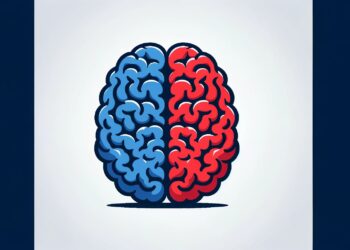Most people have deeply rooted political beliefs. As anyone who’s gotten in a heated political debate knows, most people are also very resistant to different opinions, becoming wildly defensive when their beliefs are threatened. Now, a new study might have pinpointed just how that happens.

Researchers have found that when people’s political beliefs are challenged, their brains light up in areas that govern personal identity and emotional responses to threats. When people become defensive about their political opinions, parts of the amygdala light up, parts associated with decision-making and emotional reactions. So in a way, people don’t view politics rationally, but emotionally. In this way, politics is similar to religion.
“Political beliefs are like religious beliefs in the respect that both are part of who you are and important for the social circle to which you belong,” said lead author Jonas Kaplan, an assistant research professor of psychology at the Brain and Creativity Institute at USC Dornsife College of Letters, Arts and Sciences. “To consider an alternative view, you would have to consider an alternative version of yourself.”
In order to reach this conclusion, researchers recruited 40 people who were self-declared liberals. They were presented with eight political statements and eight non-political statements, which they said to believe equally strong. They were then showed five counter-claims to each one of the 16 statements.

The non-political statements were simple facts, such as “Thomas Edison invented the lightbulb” and “Albert Einstein was a great physicist.” But when presented with counter arguments, the participants’ belief in them waned. Yes, people started to doubt whether Einstein was a great physicist.
“I was surprised that people would doubt that Einstein was a great physicist, but this study showed that there are certain realms where we retain flexibility in our beliefs,” Kaplan said.
However, when it came to political beliefs, participants wouldn’t budge. They didn’t change their beliefs much, or at all, and the people who were the most resistant had the strongest activity in the amygdala. Most interestingly, a circuit of the brain called the Default Mode Network surged in activity when the political beliefs were challenged. The default mode network is most commonly shown to be active when a person is not focused on the outside world and the brain is at wakeful rest, such as during daydreaming and mind-wandering. But it is also active when the individual is thinking about others, thinking about themselves, remembering the past, and planning for the future. The importance of emotions should not be underestimated, even in complex, rational decisions.
“We should acknowledge that emotion plays a role in cognition and in how we decide what is true and what is not true,” Kaplan said. “We should not expect to be dispassionate computers. We are biological organisms.”
Sarah Gimbel of the Brain and Creativity Institute was a co-author of the study. She says that understanding why and how this happens could be key for our progress as a society.
“Understanding when and why people are likely to change their minds is an urgent objective,” said Gimbel, a research scientist at the Brain and Creativity Institute. “Knowing how and which statements may persuade people to change their political beliefs could be key for society’s progress,” she said.
Journal Reference: Jonas T. Kaplan, Sarah I. Gimbel & Sam Harris. Neural correlates of maintaining one’s political beliefs in the face of counterevidence. Scientific Reports, December 2016 DOI: 10.1038/srep39589






